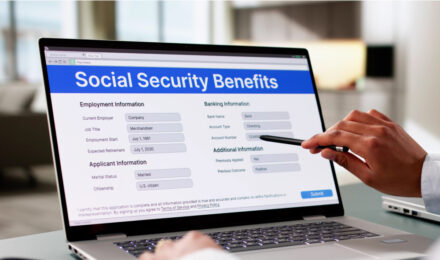Table of Contents
- Medicaid: The Cornerstone of Public Health Coverage
- Children’s Health Insurance Program (CHIP): Ensuring Pediatric Care
- Community Health Centers: Local Access to Low-Cost Care
- Marketplace Subsidies: Affordable Health Insurance Options
- Temporary Assistance Programs: Short-Term Medical Relief
- Pharmaceutical Assistance Programs: Reducing Drug Costs
- Medicare Savings Programs: Aid for the Elderly and Disabled
- Applying for Healthcare Financial Aid: Process and Considerations
- Conclusion: A Lifeline for Millions
Healthcare remains one of the most significant burdens for low-income families across the United States. The high cost of medical services, insurance premiums, and prescription drugs often places essential care out of reach. Fortunately, there are multiple healthcare financial aid programs designed to reduce this burden and ensure that families can access the treatment they need without incurring crippling debt. Understanding the scope, eligibility, and benefits of these programs is essential for anyone seeking medical support under financial constraints.
Medicaid: The Cornerstone of Public Health Coverage
Medicaid is the most comprehensive healthcare aid program available for low-income individuals and families. It is jointly funded by federal and state governments but managed at the state level, which results in varying eligibility criteria and benefits from one state to another.
Eligibility and Benefits
Families with incomes at or below 138% of the federal poverty level generally qualify for healthcare financial aid. Certain populations, such as pregnant women, children, elderly individuals, and people with disabilities, receive priority consideration. Medicaid covers a wide range of medical services, including:
- Hospital stays and emergency care
- Doctor visits and preventive screenings
- Maternity and pediatric services
- Mental health treatment
- Long-term care and home health services
Many states have expanded Medicaid under the Affordable Care Act, extending coverage to more individuals, particularly childless adults who were previously excluded.
Children’s Health Insurance Program (CHIP): Ensuring Pediatric Care
For families who earn too much to qualify for Medicaid but still cannot afford private insurance, CHIP offers vital coverage for children up to age 19. Like Medicaid, it is federally and state-funded, but focused exclusively on children’s health needs.
Coverage Highlights
CHIP benefits typically include:
- Immunizations and routine checkups
- Prescription drugs
- Vision and dental care
- Emergency services and hospital visits
In many states, CHIP also covers pregnant women. Importantly, CHIP enrollment is available year-round, making it more accessible for families during times of unexpected hardship or job loss.
Community Health Centers: Local Access to Low-Cost Care
Federally Qualified Health Centers (FQHCs), commonly referred to as community health centers, provide primary care services to underserved populations regardless of their ability to pay. These centers are essential safety nets for families who may not be eligible for Medicaid or who are undocumented.
What They Offer
- Sliding scale fees based on income
- Preventive, dental, and mental health services
- Chronic disease management
- Referrals for specialty care when needed
These centers receive federal funding and are often located in medically underserved areas. They play a critical role in bridging the gap between public health programs and those who fall outside their scope.
Marketplace Subsidies: Affordable Health Insurance Options
Under the Affordable Care Act, the Health Insurance Marketplace offers subsidies—officially called Advance Premium Tax Credits—to make private insurance more affordable for low- and moderate-income families. Those earning between 100% and 400% of the federal poverty level can qualify for these credits.
Types of Assistance
- Premium subsidies reduce monthly insurance payments
- Cost-sharing reductions lower deductibles, copayments, and out-of-pocket maximums
Families can compare different plans on the federal or state exchanges to find one that meets their health needs and budget. Open enrollment typically occurs annually, although qualifying life events can allow for special enrollment periods.
Temporary Assistance Programs: Short-Term Medical Relief
Several programs offer limited or emergency financial assistance for medical needs, particularly during a crisis or job transition.
Examples Include:
- Emergency Medicaid: For undocumented individuals needing urgent medical attention, such as labor and delivery.
- State-specific aid: Some states run short-term programs for cancer treatments, HIV care, or dialysis services.
- Hospital charity care: Non-profit hospitals often offer financial aid to uninsured patients based on income and need.
These programs do not replace comprehensive insurance but can alleviate the immediate burden of acute medical expenses.
Pharmaceutical Assistance Programs: Reducing Drug Costs
Prescription medications can represent a significant portion of healthcare costs. Many pharmaceutical companies and non-profits operate Patient Assistance Programs (PAPs) that provide medications at reduced cost—or even free—to qualified individuals.
Notable Initiatives
- NeedyMeds: A database that connects patients with applicable PAPs.
- RxAssist: Offers a comprehensive listing of manufacturer-based aid programs.
- State-run discount programs: Available in states like California, New York, and Texas to help residents save on prescriptions.
Most of these programs require proof of income, residency, and lack of insurance coverage, but they are often underutilized due to lack of public awareness.
Medicare Savings Programs: Aid for the Elderly and Disabled
For low-income seniors and individuals with disabilities, Medicare can still carry heavy out-of-pocket costs. Medicare Savings Programs (MSPs) assist with these expenses by covering:
- Medicare Part A and Part B premiums
- Deductibles and coinsurance
- Extra Help for prescription drug costs under Medicare Part D
Eligibility varies by state, but most programs are available to those earning less than 135% to 200% of the federal poverty level. These programs are crucial for reducing medical bankruptcy risks among older adults.
Applying for Healthcare Financial Aid: Process and Considerations
Navigating the application process can be complex. However, knowing the necessary steps and documentation can increase approval chances.
Key Steps
- Assess eligibility: Use online screening tools like Benefits.gov or Healthcare.gov.
- Prepare documentation: Gather proof of income, household size, and residency.
- Apply online or in person: Medicaid and CHIP applications can usually be filed through state portals or in person at local health departments.
- Follow up: Timely responses to additional documentation requests are critical.
Local advocacy groups, nonprofit organizations, and certified enrollment navigators can assist families in completing and submitting applications successfully.
Conclusion: A Lifeline for Millions
Healthcare financial aid programs are more than bureaucratic structures—they are lifelines for millions of American families struggling to access essential care. From Medicaid and CHIP to community health centers and marketplace subsidies, these resources are pivotal in ensuring health equity across economic classes.
Awareness, timely application, and proper documentation remain key factors in obtaining aid. For families navigating these challenges, support is available—not just through government channels but through a broader network of nonprofits and healthcare providers committed to making healthcare a right, not a privilege.
References:
- Medicaid.gov. “Medicaid & CHIP Coverage.” https://www.medicaid.gov/
- HealthCare.gov. “Health Coverage Options for the Uninsured.” https://www.healthcare.gov/unemployed/coverage/
- NeedyMeds. “Patient Assistance Programs.” https://www.needymeds.org/
Table of Contents
- Medicaid: The Cornerstone of Public Health Coverage
- Children’s Health Insurance Program (CHIP): Ensuring Pediatric Care
- Community Health Centers: Local Access to Low-Cost Care
- Marketplace Subsidies: Affordable Health Insurance Options
- Temporary Assistance Programs: Short-Term Medical Relief
- Pharmaceutical Assistance Programs: Reducing Drug Costs
- Medicare Savings Programs: Aid for the Elderly and Disabled
- Applying for Healthcare Financial Aid: Process and Considerations
- Conclusion: A Lifeline for Millions
Healthcare remains one of the most significant burdens for low-income families across the United States. The high cost of medical services, insurance premiums, and prescription drugs often places essential care out of reach. Fortunately, there are multiple healthcare financial aid programs designed to reduce this burden and ensure that families can access the treatment they need without incurring crippling debt. Understanding the scope, eligibility, and benefits of these programs is essential for anyone seeking medical support under financial constraints.
Medicaid: The Cornerstone of Public Health Coverage
Medicaid is the most comprehensive healthcare aid program available for low-income individuals and families. It is jointly funded by federal and state governments but managed at the state level, which results in varying eligibility criteria and benefits from one state to another.
Eligibility and Benefits
Families with incomes at or below 138% of the federal poverty level generally qualify for healthcare financial aid. Certain populations, such as pregnant women, children, elderly individuals, and people with disabilities, receive priority consideration. Medicaid covers a wide range of medical services, including:
- Hospital stays and emergency care
- Doctor visits and preventive screenings
- Maternity and pediatric services
- Mental health treatment
- Long-term care and home health services
Many states have expanded Medicaid under the Affordable Care Act, extending coverage to more individuals, particularly childless adults who were previously excluded.
Children’s Health Insurance Program (CHIP): Ensuring Pediatric Care
For families who earn too much to qualify for Medicaid but still cannot afford private insurance, CHIP offers vital coverage for children up to age 19. Like Medicaid, it is federally and state-funded, but focused exclusively on children’s health needs.
Coverage Highlights
CHIP benefits typically include:
- Immunizations and routine checkups
- Prescription drugs
- Vision and dental care
- Emergency services and hospital visits
In many states, CHIP also covers pregnant women. Importantly, CHIP enrollment is available year-round, making it more accessible for families during times of unexpected hardship or job loss.
Community Health Centers: Local Access to Low-Cost Care
Federally Qualified Health Centers (FQHCs), commonly referred to as community health centers, provide primary care services to underserved populations regardless of their ability to pay. These centers are essential safety nets for families who may not be eligible for Medicaid or who are undocumented.
What They Offer
- Sliding scale fees based on income
- Preventive, dental, and mental health services
- Chronic disease management
- Referrals for specialty care when needed
These centers receive federal funding and are often located in medically underserved areas. They play a critical role in bridging the gap between public health programs and those who fall outside their scope.
Marketplace Subsidies: Affordable Health Insurance Options
Under the Affordable Care Act, the Health Insurance Marketplace offers subsidies—officially called Advance Premium Tax Credits—to make private insurance more affordable for low- and moderate-income families. Those earning between 100% and 400% of the federal poverty level can qualify for these credits.
Types of Assistance
- Premium subsidies reduce monthly insurance payments
- Cost-sharing reductions lower deductibles, copayments, and out-of-pocket maximums
Families can compare different plans on the federal or state exchanges to find one that meets their health needs and budget. Open enrollment typically occurs annually, although qualifying life events can allow for special enrollment periods.
Temporary Assistance Programs: Short-Term Medical Relief
Several programs offer limited or emergency financial assistance for medical needs, particularly during a crisis or job transition.
Examples Include:
- Emergency Medicaid: For undocumented individuals needing urgent medical attention, such as labor and delivery.
- State-specific aid: Some states run short-term programs for cancer treatments, HIV care, or dialysis services.
- Hospital charity care: Non-profit hospitals often offer financial aid to uninsured patients based on income and need.
These programs do not replace comprehensive insurance but can alleviate the immediate burden of acute medical expenses.
Pharmaceutical Assistance Programs: Reducing Drug Costs
Prescription medications can represent a significant portion of healthcare costs. Many pharmaceutical companies and non-profits operate Patient Assistance Programs (PAPs) that provide medications at reduced cost—or even free—to qualified individuals.
Notable Initiatives
- NeedyMeds: A database that connects patients with applicable PAPs.
- RxAssist: Offers a comprehensive listing of manufacturer-based aid programs.
- State-run discount programs: Available in states like California, New York, and Texas to help residents save on prescriptions.
Most of these programs require proof of income, residency, and lack of insurance coverage, but they are often underutilized due to lack of public awareness.
Medicare Savings Programs: Aid for the Elderly and Disabled
For low-income seniors and individuals with disabilities, Medicare can still carry heavy out-of-pocket costs. Medicare Savings Programs (MSPs) assist with these expenses by covering:
- Medicare Part A and Part B premiums
- Deductibles and coinsurance
- Extra Help for prescription drug costs under Medicare Part D
Eligibility varies by state, but most programs are available to those earning less than 135% to 200% of the federal poverty level. These programs are crucial for reducing medical bankruptcy risks among older adults.
Applying for Healthcare Financial Aid: Process and Considerations
Navigating the application process can be complex. However, knowing the necessary steps and documentation can increase approval chances.
Key Steps
- Assess eligibility: Use online screening tools like Benefits.gov or Healthcare.gov.
- Prepare documentation: Gather proof of income, household size, and residency.
- Apply online or in person: Medicaid and CHIP applications can usually be filed through state portals or in person at local health departments.
- Follow up: Timely responses to additional documentation requests are critical.
Local advocacy groups, nonprofit organizations, and certified enrollment navigators can assist families in completing and submitting applications successfully.
Conclusion: A Lifeline for Millions
Healthcare financial aid programs are more than bureaucratic structures—they are lifelines for millions of American families struggling to access essential care. From Medicaid and CHIP to community health centers and marketplace subsidies, these resources are pivotal in ensuring health equity across economic classes.
Awareness, timely application, and proper documentation remain key factors in obtaining aid. For families navigating these challenges, support is available—not just through government channels but through a broader network of nonprofits and healthcare providers committed to making healthcare a right, not a privilege.
References:
- Medicaid.gov. “Medicaid & CHIP Coverage.” https://www.medicaid.gov/
- HealthCare.gov. “Health Coverage Options for the Uninsured.” https://www.healthcare.gov/unemployed/coverage/
- NeedyMeds. “Patient Assistance Programs.” https://www.needymeds.org/







